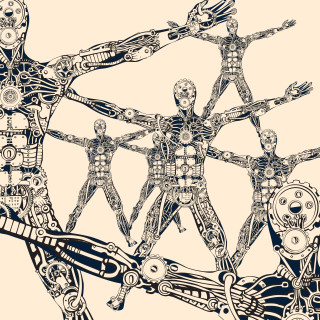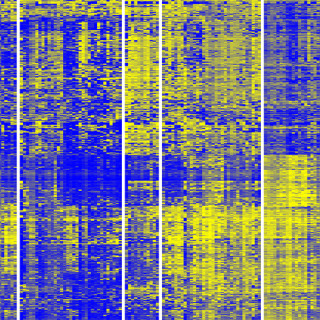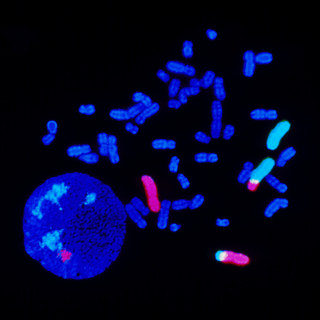microRNAs – a new path to treatment
What we used to call ‘junk DNA’ has proved to be made up of areas that produce small molecules known as non-coding RNAs. These molecules probably play a role in the origin of disease, as well as giving us new possibilities for treatments. Over the past decade, non-coding RNAs have become a hot topic in research.
The dynamics of cell metabolism and DNA transcription (information transfer) have turned out to be much more complicated than was previously thought. Research has long focused on transcription from our genes that uses RNA messengers to code for the formation of proteins, the building blocks of the body. The rest of the DNA chain, which represents the majority of our DNA, has previously been irreverently referred to as ‘junk DNA’, because researchers did not understand its function. Around ten years ago, it was discovered that these areas code for a number of small RNA molecules that are now called non-coding RNAs because they don’t code for proteins.
“Researchers are finding new RNA all the time because sequencing is now so quick and cheap”, says Sofi Elmroth, professor at the Division of Biochemistry and Structural Biology at Lund University. It is estimated that there are 2 000–3 000 different non-coding RNAs in the human body.
There are many different groups of non-coding RNAs. Sofia Elmroth and her research team primarily study microRNAs, which are molecules that influence protein levels in the cells of the body indirectly by binding to messenger RNA. One of the aims for Sofi Elmroth and her team is to understand diseases and their origins.
“We are interested in microRNAs, which we think have a role in the development of cancer”, says Sofi Elmroth. “They have to work perfectly if everything is to go well. If there is even a slight error in the levels of expression, in the quantity of microRNAs, then there is a very strong correlation to disease.”
There are many different types of microRNAs involved in the regulation of different proteins and of other RNA molecules. The quantity of microRNAs in different types of cancer varies and each type of cancer appears to display a specific pattern. However, there are certain types of microRNAs that have a key function that overrides many others. If these microRNAs are over or under expressed (increase or decrease in quantity) – for example owing to epigenetic changes to the DNA – this will have an impact on many other regulatory processes.
“An altered level of a superior microRNA is a powerful marker and could be used to diagnose diseases and develop drugs”, explains Sofi Elmroth.
Sofi Elmroth’s research group are trying to find strategies that can help restore normal function to the diseased cell. When a superior microRNA is added or removed, there are knock-on effects that open up new possibilities to develop drugs. It has proved difficult to develop drugs that act directly on epigenetic changes in DNA, but now it is possible instead to intervene later in the cell metabolism and regulate the level of specific microRNA molecules.
“As chemists, we work on one molecule at a time”, says Sofi Elmroth. “In the end, we have to know the molecule’s chemical composition in order to design drugs that also comprise only one molecule.”
Today there are many companies that can quickly produce exact copies of the microRNAs that occur naturally in the body. In just a week, Sofi Elmroth and her team can get a new molecule to test on a cell system.
“We hope to be able to contribute to the development of a whole new type of drug that, because of its resemblance to the cell’s own RNA, can effectively influence cell processes that have not previously been exploited in treatment. There are already new drugs under development”, concludes Sofi Elmroth.
Text: Pia Romare
Published: 2014
Facts
-
Sequencing
-
Sequencing is a method used to decide the exact order of the building blocks of DNA or RNA. Sequencing of DNA gives a direct picture of our genetic make-up, while sequencing of the RNA that is naturally present in cells gives a picture of which parts of our non-coding DNA are used and in what way.




